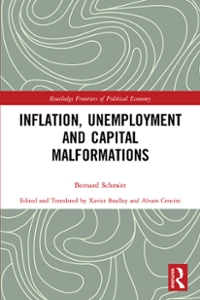Question
1.Find a recent newspaper (Internet) headline that clearly shows one of our demand ' determinants (these are the shifters found in my lecture notes
1.Find a recent newspaper (Internet) headline that clearly shows one of our "demand' determinants (these are the "shifters" found in mylecture notes) and cut and paste it into your post. (Make sure thesource is cited.)
2.Next,statethe determinant(use one of the 5 from my notes).
3.Then, tell us if it increases or decreases demand.
4.Lastly, once the shift takes place, will the new equilibrium price (Pe) be higher or lower? Will the new equilibrium quantity (Qe) be higher or lower?(Use the graphs)to help you with the direction that P and Q will move.
-----------------------------------------------
these are the notes I do have
to provide,
a video from youtube:
https://youtu.be/21lMAjisITk
or
i. Taste/Preference - A change in taste and
preferences. This is usually media drivenyou see a news article that states
drinking a glass of red wine every day reduces heart stroke. After reading
that, you may decide to drink more red winetherefore, we would see an INCREASE
in DEMANDand our demand line would shift to the right. Look
at the graph on page 48, Figure 3.3 (the graph is for corn, but it works for
any good or service). Our demand line shifts from D1 to D2. The
price
of red wine did not change, but more consumers are buying red wine
due to the health benefits. If this is the case, think about the market for beer.
If people switched their taste and now prefer wine, what happens to the demand
for beer?
Hopefully you said it would decreasegraphically, in the beer market, our
demand line would shift left (D1 to D3).
ii. Income - A change in income. Changes in
our income will also affect our buying decisions. The more you make the more
you spend. However, we need to clarify things a bit.
1.Normal
goods - if a good is "normal," when our income increases, we would
buy MORE of it. For example, if your income increases, and you buy more Buckle
jeans, then Buckle
jeans are a "normal" good to you. (Other examples: Sony 60" flat
screen TV, steak & lobster, new car, trips to Bahamas, jewelry, etc.)
2.Inferior
goods - if a good is "inferior," then when your income increases, you
would buy less
of it. That's what defines it as "inferior." For example, your income
increases, and you buy less Wal-Mart jeans, then Wal-Mart
jeans are an inferior good to you. (Other examples: Off-brand 32" TV,
hamburgers & fish sticks, used car, trips to Bransonyikes!)
iii. # of buyers - A change in the number of
buyers. This one is based on a demographic or a geographic change. 1) Demographics
relate to the "make-up" of the population. Age, race, culture,
gender, religion, etc. For example, I've become a buyer in the "wrinkle
cream" market. I wasn't a buyer in that market when I was in my 40's, but
now that I'm in my 60's, I became a new buyer in that
marketbased solely on my age. Lots of other baby boomers are now buying
wrinkle cream too! Think of markets that you have either moved into, or out of,
based on your age. 2) Change in the number of buyers based on a geographic
just means that if you move, you may become a buyer in a market where you
previously were not one. Think of moving to Alaska...what you might demand
there would be different than what you demand here in KS. (I'm thinking
snowshoes or dogsleds...)
iv. in the price of a related good - A
change in the price of a related good. Goods can be related or unrelated. Sometimes price changes in one market affect anothermeaning
our goods are somehow related.
1.Substitutes
- two goods can be substitutes - meaning they can take the place of one another.
For example, Coke
and Pepsi.
For some buyers, it doesn't matter which one they buy. If the price of Coke
increases, consumers don't change their demand for Coke, they just buy less
at the higher price, so they change their "quantity demanded" for Coke.
However, since they want a soft drink, and Pepsi is now relatively
cheaper, we'll find some buyers will substitute the Pepsi
for the Coke.
Pepsi's
price isn't changing, but we increase our demand for Pepsi because the Coke
prices went up and we need a substitute. This moves us upward along
the Coke
demand line, but it shifts the Pepsi
demand line to the right.
a.Non-price
Determinants (shifters) of supplythese are the determinants that will
shift the supply line (curve).
i. cost (resource prices)
1.If
you produce candles, one of your inputs (resources) is wax. If the price of wax
increases, the supply of candles would decrease (you would purchase less wax to
make your candlesand therefore make less candles).
Our equilibrium price and
equilibrium quantity, denoted by (Pe, Qe), will change whenever any of our non-price
determinants of either demand or supply change. (You have 5
demand-side shifters and you have 7 supply-side shifters.)

Step by Step Solution
There are 3 Steps involved in it
Step: 1

Get Instant Access to Expert-Tailored Solutions
See step-by-step solutions with expert insights and AI powered tools for academic success
Step: 2

Step: 3

Ace Your Homework with AI
Get the answers you need in no time with our AI-driven, step-by-step assistance
Get Started


